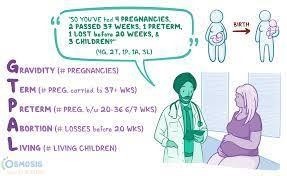A nurse is caring for a client who is receiving epidural analgesia during labor. Which of the following findings is the nurse's first priority?
Temperature 38.2°C (100.8°F)
The client reports reduced sensation of the lower extremities.
The client reports generalized itching.
Blood pressure 80/52 mm Hg
The Correct Answer is D
A: Elevated temperature during labor may be common and is not the nurse's first priority, especially when the client is receiving epidural analgesia, as it can be related to the stress of labor or other factors.
B: Reduced sensation of the lower extremities is an expected effect of epidural analgesia, and it is not the nurse's first priority unless it leads to complications such as motor weakness or respiratory distress.
C: Generalized itching is a common side effect of epidural analgesia due to opioids, and it can be managed with interventions such as antihistamines. However, it is not the nurse's first priority unless it is severe or accompanied by other concerning symptoms.
D: Epidural analgesia can cause vasodilation and decrease the client's blood pressure, which can lead to hypotension. Hypotension can be detrimental to both the mother and the baby and requires immediate attention to prevent complications. Therefore, the nurse's first priority is to address the low blood pressure.
Nursing Test Bank
Naxlex Comprehensive Predictor Exams
Related Questions
Correct Answer is C
Explanation
The correct answer is: c. 42022
Choice A: 40122
Reason: This choice is incorrect because it indicates 4 pregnancies (correct), 0 term births (correct), 1 preterm birth (correct), 2 abortions (correct), but 2 living children (incorrect). The client has 2 living children, which is correct, but the term and preterm counts are not accurate.
Choice B: 20020
Reason: This choice is incorrect because it indicates 2 pregnancies (incorrect), 0 term births (correct), 0 preterm births (incorrect), 2 abortions (correct), and 0 living children (incorrect). The client has had 4 pregnancies, 1 preterm birth, and 2 living children.
Choice C: 42022
Reason: This choice is correct. It indicates 4 pregnancies (current pregnancy, elective abortion, twins, spontaneous abortion), 0 term births, 2 preterm births (twins at 36 weeks), 2 abortions (elective at 9 weeks, spontaneous at 15 weeks), and 2 living children (twins).
Choice D:
The GTPAL system is used to assess a client's obstetric history:
- G (Gravida): The total number of pregnancies, including the current one.
- T (Term births): The number of pregnancies carried to at least 37 weeks.
- P (Preterm births): The number of pregnancies delivered between 20 and 36 weeks, 6 days.
- A (Abortions): The number of pregnancies ending before 20 weeks (spontaneous or elective).
- L (Living children): The number of children currently alive.
For this client:
G (Gravida): 4 (one elective abortion, one twin pregnancy, one spontaneous abortion, and the current pregnancy).
- T (Term births): 0 (the twin pregnancy was delivered at 36 weeks, which is preterm).
- P (Preterm births): 1 (twins delivered at 36 weeks count as one preterm birth).
- A (Abortions): 2 (one elective abortion at 9 weeks, one spontaneous abortion at 15 weeks).
- L (Living children): 2 (the twins).
Thus, the GTPAL for this client is 4-0-1-2-2.

Correct Answer is D
Explanation
A.A client at 38 weeks of gestation with a cough and fever may have an infection, which is concerning, but it is not immediately life-threatening. The nurse should assess this client soon, but it is not the highest priority.
B.A client who has missed a period and reports vaginal spotting could be experiencing an early pregnancy complication, such as a miscarriage or ectopic pregnancy. This situation requires attention, but it is not as urgent as painless vaginal bleeding in the third trimester.
C.A client at 14 weeks of gestation with nausea and vomiting is likely experiencing common pregnancy symptoms. While these symptoms can be uncomfortable and require management, they are not typically urgent.
D.A client at 28 weeks of gestation with painless vaginal bleeding could be experiencing placenta previa or another serious condition that poses an immediate risk to both the mother and the fetus. This situation requires urgent assessment and intervention.
Whether you are a student looking to ace your exams or a practicing nurse seeking to enhance your expertise , our nursing education contents will empower you with the confidence and competence to make a difference in the lives of patients and become a respected leader in the healthcare field.
Visit Naxlex, invest in your future and unlock endless possibilities with our unparalleled nursing education contents today
Report Wrong Answer on the Current Question
Do you disagree with the answer? If yes, what is your expected answer? Explain.
Kindly be descriptive with the issue you are facing.
